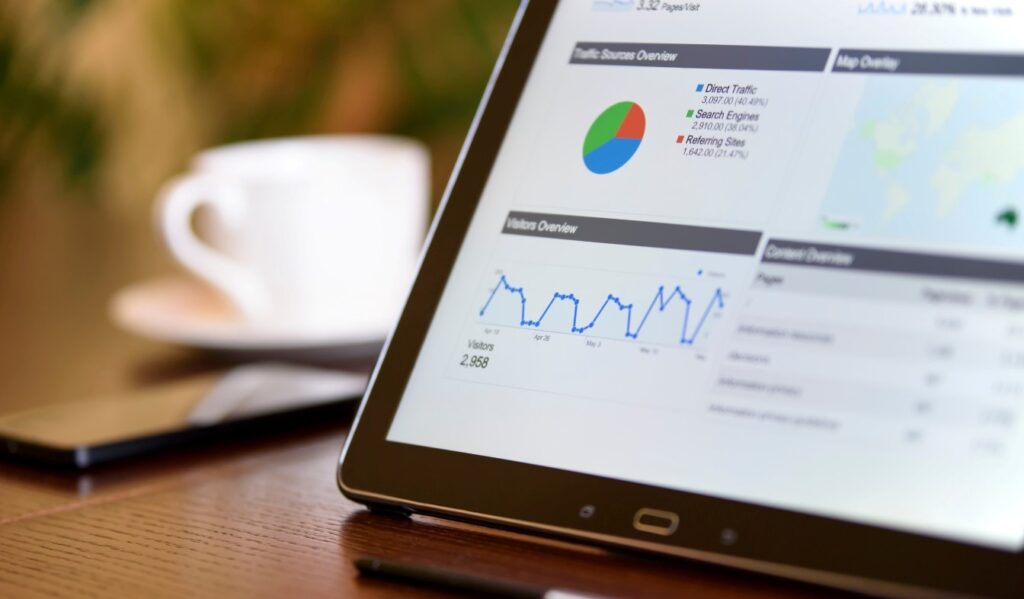In today’s competitive online market, businesses need every advantage they can get to stay ahead. One of the most effective ways to gain an edge is by understanding how website visitors interact with your site. Recording visitor activity provides valuable insights, helping businesses fine-tune their strategies, create personalized experiences, and ultimately drive growth. This guide explains the key methods to record website visitors, the essential metrics to track, and how to turn this data into actionable insights that can boost business performance.
Why Recording Website Visitors is Essential for Business Growth
Every visit to your website presents an opportunity to learn more about what works and what doesn’t. Visitor data reveals trends in user behavior, popular pages, and potential roadblocks that could be causing visitors to leave. Record website visitors, and you can gain the ability to:
- Improve User Experience: Observing how visitors interact with your website helps you understand what content, navigation, or design elements could be refined for a smoother user experience.
- Increase Engagement and Conversions: Tracking and analyzing data on website interactions can reveal what content resonates most, enabling you to optimize for higher engagement and conversion rates.
- Identify Growth Opportunities: Recording visitor data provides a snapshot of customer interests, helping identify new areas for expansion or marketing focus based on popular content and products.
Essential Tools and Methods to Record Website Visitors
There are various tools available to help businesses effectively track visitor activity and gather meaningful data. Here’s an overview of some popular options:
1. Google Analytics
Google Analytics is a powerful, free tool that provides a detailed overview of website traffic, visitor demographics, and behavior patterns. With features like bounce rate tracking, session duration, and user journey mapping, it helps you understand which pages are most engaging and where improvements are needed.
2. Heatmaps and Session Recordings
Tools like Hotjar and Crazy Egg provide heatmaps and session recordings, offering a visual representation of where users click, scroll, or pause on your website. Heatmaps help pinpoint the most and least engaging parts of a page, while session recordings allow you to watch individual user interactions in real-time, giving direct insight into user experiences.
3. Customer Data Platforms (CDPs)
Customer data platforms, such as Segment, allow businesses to unify data from multiple channels, creating a complete profile of each visitor. With CDPs, you can track interactions across your website, app, and even customer service platforms, providing a comprehensive view of user behavior that can help with segmentation and targeted marketing.
Key Metrics to Track for Actionable Insights
To make the most of visitor data, focus on the metrics that provide direct insights into user behavior and preferences. Here are the essential metrics to monitor:
1. Visitor Behavior Metrics
Behavioral metrics include key data points like bounce rate, session duration, and pages per session. These metrics reveal how visitors navigate your site, how long they stay, and whether they engage with multiple pages.
- Bounce Rate: The percentage of visitors who leave after viewing only one page. A high bounce rate could indicate a disconnect between user expectations and content relevance.
- Session Duration: The total time a visitor spends on your website during a session. Longer session durations usually signal engagement and content relevance.
- Pages per Session: This shows how many pages a user visits within a single session, helping identify interest in various sections of your site.
2. Conversion and Goal Tracking
Conversion tracking is vital for understanding the effectiveness of your website in driving actions like purchases, sign-ups, or downloads. Setting up goals in Google Analytics allows you to track specific actions and measure conversion rates, giving insight into which pages or campaigns are driving results.
3. Traffic Sources and User Journeys
Knowing where visitors come from, whether it’s social media, search engines, or referral websites, helps you target marketing efforts more effectively. Google Analytics offers detailed information on traffic sources, letting you see which channels bring the most engaged users. Understanding the user journey, from the entry page to exit points, highlights any friction points that may disrupt conversions.
Analyzing Data to Drive Business Decisions
Once you’ve recorded visitor data, it’s time to turn those insights into action. Here are ways to analyze data and apply it effectively:
1. Identifying Visitor Patterns
Look for patterns in how users navigate through your site. If you notice visitors repeatedly dropping off at a certain point, it might be a sign of confusing navigation or unappealing content. Use these insights to adjust page layout, refine content, or add calls-to-action (CTAs) that guide visitors to take the next step.
2. Segmentation and Personalization
Segmenting your audience allows you to tailor your marketing efforts to specific user groups. Use visitor data to create personalized experiences for returning visitors versus new ones or segment by demographic information like location and device type. This targeted approach increases the chances of engaging visitors effectively, making them more likely to return and convert.
3. Optimizing Conversion Paths
Conversion path analysis identifies how visitors move through your site before completing a desired action. By optimizing these paths—such as simplifying forms, removing unnecessary steps, or enhancing CTAs—you can improve the likelihood of visitors reaching the end goal, whether it’s making a purchase or signing up for a newsletter.
Practical Steps to Use Visitor Data for Business Growth
Using data to grow your business doesn’t stop at tracking metrics. Here’s how you can put visitor data to practical use:
1. Data-Driven Marketing Campaigns
Visitor insights can reveal preferences, pain points, and interests, helping you craft more relevant marketing campaigns. For instance, if a specific product page has high engagement, you could create a campaign around that product, targeting users who previously visited it.
2. Product Development and Service Enhancements
Your visitor data often reflects what users value most about your business. By analyzing popular content or frequently visited pages, you can prioritize product features or services that align with customer needs. This customer-centered approach helps businesses make smarter, data-backed decisions.
3. Customer Retention Strategies
Retaining customers is more cost-effective than acquiring new ones, and visitor data can aid in achieving this. Use data to identify points where visitors consistently engage, then build on those touchpoints by providing personalized offers, sending follow-up emails, or creating loyalty programs based on previous interactions.
Conclusion
Recording website visitors is more than just collecting data; it’s about gaining a deeper understanding of your audience and using those insights to fuel growth. By selecting the right tools, focusing on essential metrics, and analyzing data effectively, businesses can create a more engaging and profitable online experience. Start harnessing these insights today and identify new paths to growth with your visitor data.
Ready to record website visitors and drive growth? Let us help you set up and analyze visitor data to boost your business performance. Contact “identified” today!




